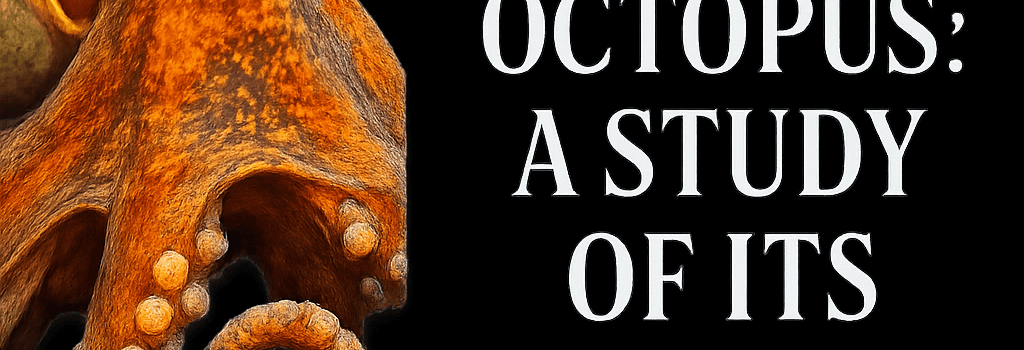The Nine-Armed Octopus: A Study of Its Nervous System

Extra-Sensory Perception and Camouflage
With their rapid chromatophore-driven camouflage and problem-solving prowess, octopuses continue to captivate both the public and scientific communities. These cephalopods can recognize individual humans, complete maze tasks, and learn by observation—capabilities once thought exclusive to vertebrates. Underpinning these abilities is a uniquely complex nervous system that blends centralized processing with highly autonomous peripheral networks.
The Architecture of a Decentralized Neural Network
Octopuses possess roughly 500 million neurons, on par with a medium-sized dog, making them the most neuron-rich invertebrates on Earth. Yet about 350 million of those neurons—nearly 70 percent—reside not in a central brain but distributed along their eight arms. Each arm hosts an axial nerve cord containing up to 10 million neurons and hundreds of sucker ganglia, forming true “mini-brains.” This distribution allows rapid, localized sensorimotor decisions without routing every signal through the cephalic brain.
Arm Autonomy: Local Processing and Reflexes
Michigan State University’s Galit Pelled and colleagues recently used high-density microelectrode arrays to record from isolated arms. They demonstrated that within 100 milliseconds of tactile stimulation, the arm’s ganglia generate predictive motor commands—well before any signal reaches the central brain. This level of autonomy is unprecedented among vertebrates, where reflex arcs still rely on spinal processing but remain coordinated by a central nervous system.
“Each arm can initiate grasping, exploration, or withdrawal,” Pelled explains. “That localized control frees the brain to engage in higher-order tasks like learning and navigation.”
Sucker Ganglia and the Peripheral Nervous System
Each sucker contains a ring of up to 2 000 peripheral neurons, linked to the axial nerve cord. University of Chicago graduate student Cassady Olson notes that some species have more than 10 000 suckers, creating one of the densest peripheral neural networks known. These ganglia process taste, texture, and chemical cues, enabling the arm to identify prey without central oversight.
Recent work at the Scripps Institution of Oceanography applied CLARITY volumetric imaging to cleared octopus limbs, revealing three-dimensional connectomes of the sucker ganglia. This technique illuminated how local circuits integrate multiple sensory modalities and coordinate complex sucker movements at millisecond scales.
Central Brain and Optic Lobes
The octopus’s central brain sits between its eyes inside the mantle, interfacing with two optic lobes that account for nearly half its neuron count. These lobes perform real-time image processing, analogous to the human visual cortex, but with far fewer hierarchical layers. Recent fMRI studies on Octopus bimaculoides by the University of Washington’s Z. Yan Wang reveal retinotopic maps that parallel mammalian designs—an example of convergent evolution.
Convergent Evolution and Neural Analogues
Though the last common ancestor of humans and octopuses lived over 750 million years ago, both have evolved camera-type eyes and complex neural architectures. Neuroscientists use these analogies to trace independent solutions to similar environmental pressures. The octopus’s axial nerve cord, for instance, functions like our spinal cord, while sucker ganglia mirror peripheral sensory neurons in our skin.
Case Study: The Nine-Armed Octopus Salvador
Between 2021 and 2022, Spain’s ECOBAR lab at the Institute of Marine Research tracked a male Octopus vulgaris that regenerated a bifurcated right arm, resulting in nine functional limbs. Led by Sam Soule and Jorge Hernández Urcera, the team used HD video and inertial sensors to monitor limb usage. Salvador exhibited site-specific avoidance: using the split arm only in low-risk exploration. This behavioral adaptation suggests long-term memory of the injury and fine-tuned neural remapping to incorporate the extra appendage.
“The arm’s ganglia didn’t treat the bifurcation as an anomaly,” Pelled observes. “They integrated it seamlessly, showing plasticity at every neural level.”
Implications for Soft Robotics
Engineers at MIT and the Max Planck Institute are developing octopus-inspired soft manipulators using fluidic elastomers and embedded sensor networks. By mimicking the arm’s decentralized control, these robots achieve unprecedented dexterity and fault tolerance. In late 2025, a team demonstrated a prototype with 32 pressure sensors and 16 local microcontrollers along a single arm, enabling autonomous grip adjustment in unstructured environments.
Regenerative Medicine and AI-Driven Neural Models
Regrowing limbs in octopuses provides a blueprint for regenerative therapies. Computational neuroscientists at Stanford recently trained graph neural networks on octopus connectome data to predict axonal regrowth patterns. These AI models have already guided gene-editing experiments in zebrafish, improving spinal cord injury recovery by 20 percent in preclinical trials.
Future Directions: High-Resolution Neural Mapping
Ongoing projects aim to integrate volumetric calcium imaging and optogenetics in freely moving octopuses. A consortium led by JILA and NIST hopes to build a 4D activity atlas of the octopus nervous system by 2027. Such data will not only elucidate cephalopod cognition but also push the limits of neural interface technology for biohybrid robots and prosthetics.
Conclusions
The nine-armed octopus exemplifies the extraordinary resilience and flexibility of a decentralized nervous system. From autonomous sucker ganglia to AI-inspired regenerative models, cephalopod neuroscience is unlocking new avenues in robotics, medicine, and fundamental biology. As technologies like high-density electrophysiology and deep learning converge, our understanding of these invertebrate marvels will only deepen.